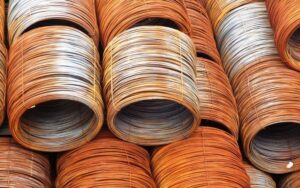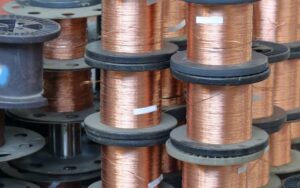Thermal Compression Bonding Technology is a connectivity method that is useful for joining two ultra-fine wires. This method is also efficient to join an ultra-fine wire with another wire of a different diameter. Even if the diameter of a wire is twelve times thicker than another wire, this connectivity technology can build a reliable connection between the wires.
Earlier, manufacturers used to rely on two traditional heat-based soldering methods to join the wires. However, when the diameter of the wires is too small, we can not rely on traditional welding and soldering methods because of various drawbacks. Thermal compression bonding technology is also known as the micro-soldering method which is the ultimate solution for building a connection between two ultra-fine wires. A 9-micron ultra-fine wire is significantly thinner (5 to 10 times) in comparison to human hair.
The Importance of Thermal Compression Bonding Technology:
To deal with the increasing demand for sensors, transducers, and other microscopic parts, the application of ultra-fine wires has become incredibly necessary. The production of these microscopic parts requires effective technologies so that the manufacturers can efficiently join two ultra-fine wires without facing the constraints of traditional heat-based soldering methods. When it comes to building advanced micro-motion positioning and controlling systems, the winding of ultra-fine wires is essential to prepare micro-coils.
Nevertheless, the tiny diameters of the ultra-fine wires create various challenges for the manufacturers during the connectivity procedure. The main challenge for connectivity development is maintaining the final size and shape of the microscopic components. There are multiple physical and environmental factors that can affect this process. Maintaining the ultra-strict tolerance limits is also substantially important for different applications of micro-coils. Traditional methods can not meet all these requirements. Therefore, to build reliable joints between ultra-fine wires, manufacturers use the thermal compression bonding method.
Connections through Thermal Compression Bonding Method:
The thermal compression bonding method is applicable-
- To build joints between ultra-fine wires and tiny thermocouples,
- To join an electromagnetic micro-coil with a support system with the help of metal-plated terminals.
- To develop metal-to-metal connections between micro-coils and a printed circuit board by using thicker transitional wires.
The thermal compression bonding method can offer you corrosion-free, extremely reliable and durable, and strain-free joints. You will also have to bear less manufacturing cost in comparison to traditional methods. Mass production method using this technology helps to lessen manufacturing costs and maintain high standards for biomedical applications. When it comes to the production of disposal or other long-life products like permanent implants, this bonding technology is useful.
Benefits of Thermal Compression Bonding Technology:
This bonding technology is beneficial in many ways, such as-
- In diminishing the production noise level,
- In relieving strain at the joints, and
- To avoid damage to the sensitive micro-components, this method is effective and safe.
- You will get oxidization-free and durable joints by using this method.
- The mass production facility makes this bonding technology more economic than the traditional methods.
- You can conduct automated production processes using this technology and eliminate human errors.
Traditional Connectivity Methods:
Two famous and traditional connectivity methods for joining wires or metals are-
- Soldering method that helps to seal the joints by applying a filler metal using an external heat source.
- Welding method that helps to build a metal-to-metal connection by melting them using an electric current.
Both these methods have several limitations and the methods become ineffective with ultra-fine wires. If you use these methods to join ultra-fine wires, you will face the below scenarios-
- You will get less durable and prone to oxidized connections.
- The traditional heat-based methods can cause damage to the tiny ultra-fine wires due to imprecise heat spreading.
- Excess physical strain can develop on the joints and these methods can harm the reliability and durability of the connections.
Applications:
Using this technology, you can build micro-coils for different applications. For instance, in devices for electrophysiology treatments pain management devices, devices for electricity-based ablations, pacemakers, and numerous other critical medical devices, micro-coils are necessary. To prepare those micro-coils, you can use no other connectivity solutions but thermal compression bonding technology. This technology is also essential to prepare sensor implants and devices to detect blood flow, heart-beat, blood pressure, and other physical conditions.




